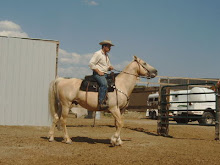 I love the Morgan dollar, but one problem they have, or should I say we have; when buying them or trading for them, the market does have some very good quality counterfeits.
I love the Morgan dollar, but one problem they have, or should I say we have; when buying them or trading for them, the market does have some very good quality counterfeits.
But, if you know what to look for, they are fairly easy to spot.
The pictures show a counterfeit with two genuine coins. The counterfeit is the middle coin in all the pictures. Now, in the pic below the left coin is a near mint condition, the coin on the right is a fair depiction of a dollar with normal wear. 

The counterfeit weighs withen the correct range (worn coins never weigh all the same so close is as good as you can get), it is nonmagnetic and the detail is very good.
 You probably have noticed the difference is in the thickness. The counterfeit is thicker than the real coins. The reason for the greater thickness, is because metal has a mass to weight ratio. The metal for the counterfeit need more mass to achieve equal weight (or close enough ). Silver has a distinct weight ratio, this is the major hurdle for any good counterfeit. Gold on the other hand is nearly identical weight to mass ratio as tungsten ........ But thats another subject.
You probably have noticed the difference is in the thickness. The counterfeit is thicker than the real coins. The reason for the greater thickness, is because metal has a mass to weight ratio. The metal for the counterfeit need more mass to achieve equal weight (or close enough ). Silver has a distinct weight ratio, this is the major hurdle for any good counterfeit. Gold on the other hand is nearly identical weight to mass ratio as tungsten ........ But thats another subject.
The counterfeit coin is a cast pored job, note the edge is not uniform. A US coin is dye struck, meaning a blank coin is actually hit with a dye and the image is formed (or transfered ). The counterfeit is molten metal pored in a cast, or a mold. So, in this case, the counterfeit is easily spotted by stacking it with other Morgans, that are known to be authentic.
Also silver has a distinct ring when striking two coins together, or drop the coin flat side on a counter or cutting board; the ring is different than any fake coin.
Keep stacking! I know i will.



![[Most Recent Quotes from www.kitco.com]](http://www.kitconet.com/charts/metals/gold/t24_au_en_usoz_2.gif)
![[Most Recent Quotes from www.kitco.com]](http://www.kitconet.com/charts/metals/silver/t24_ag_en_usoz_2.gif)




No comments:
Post a Comment